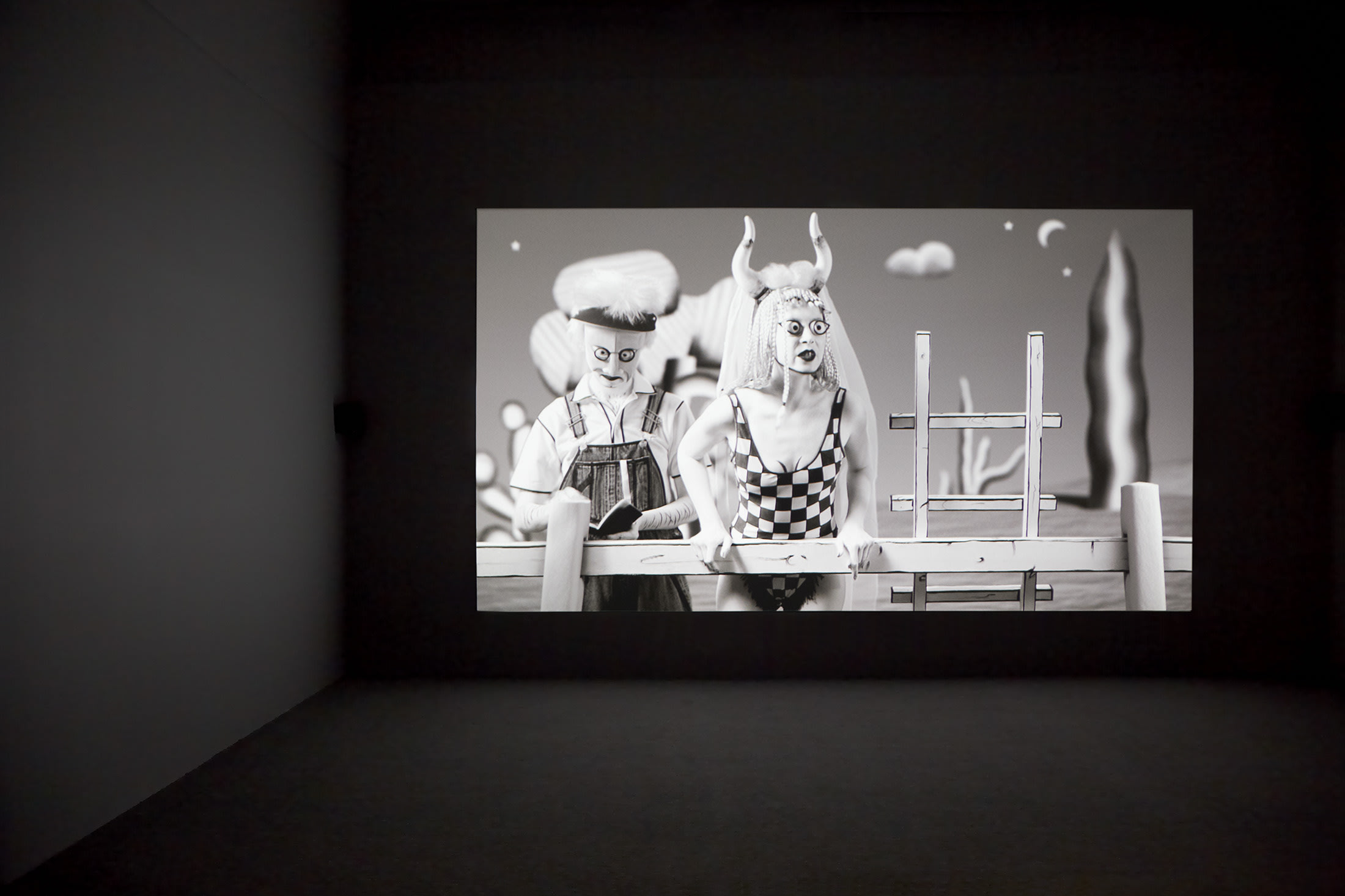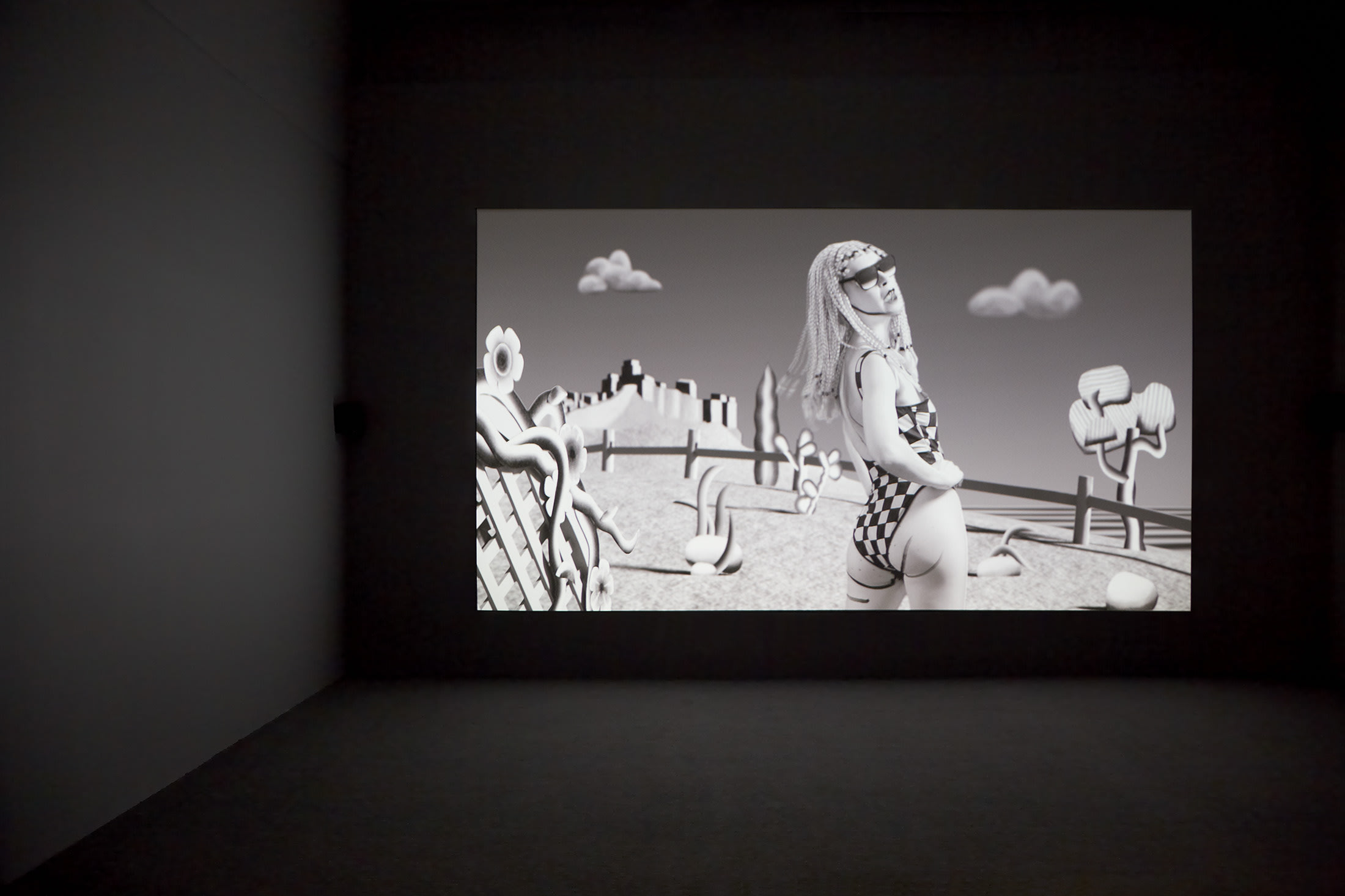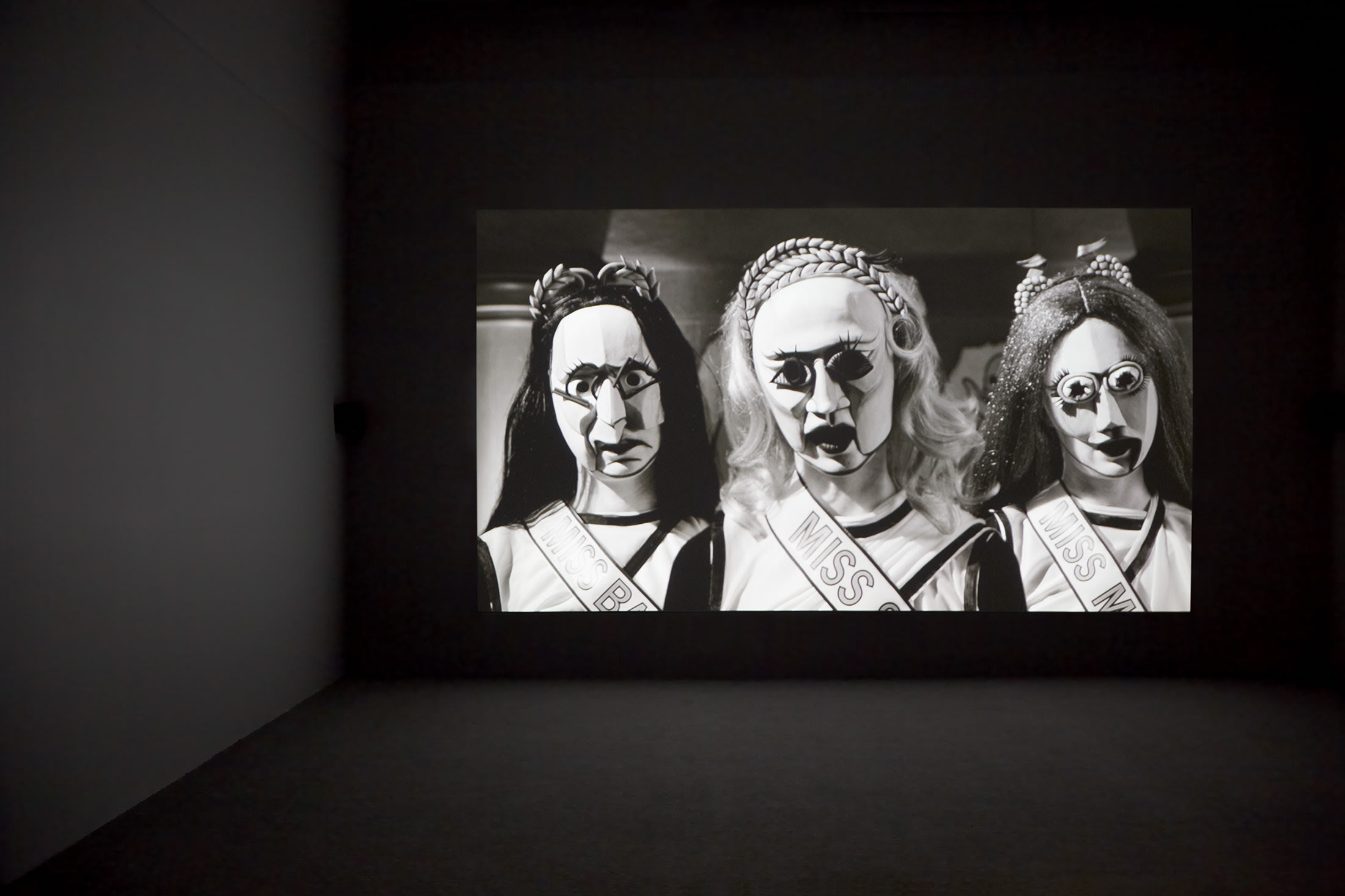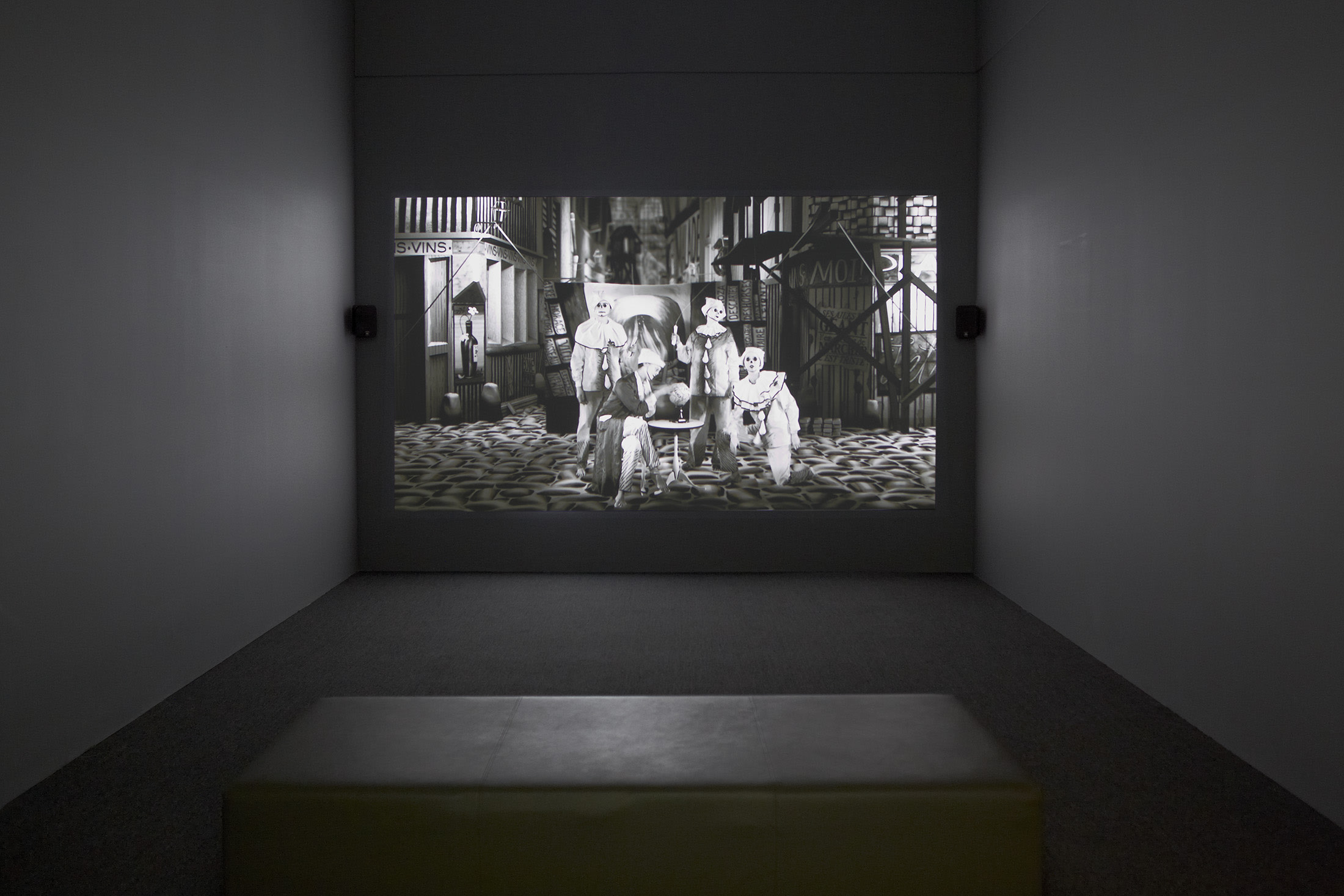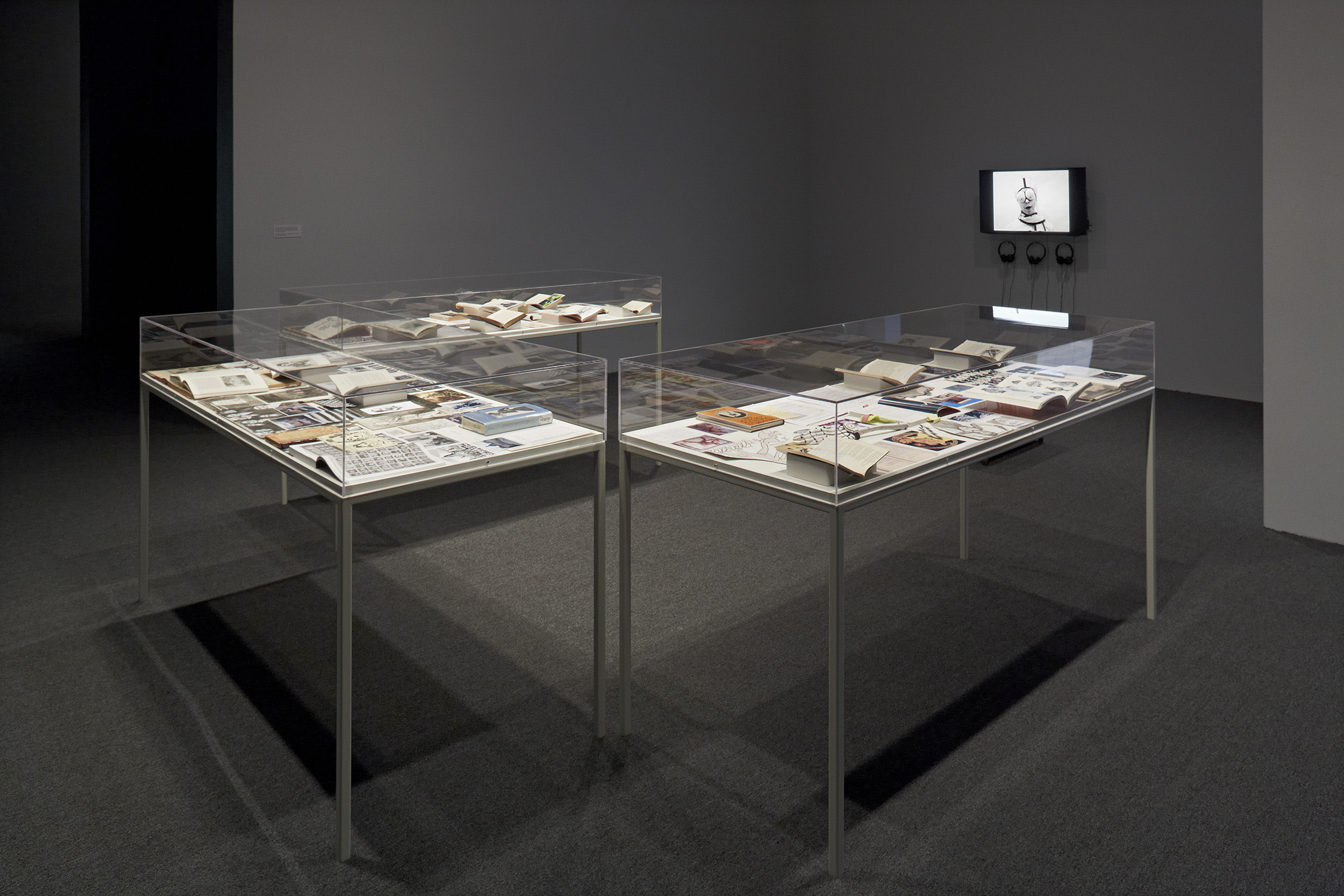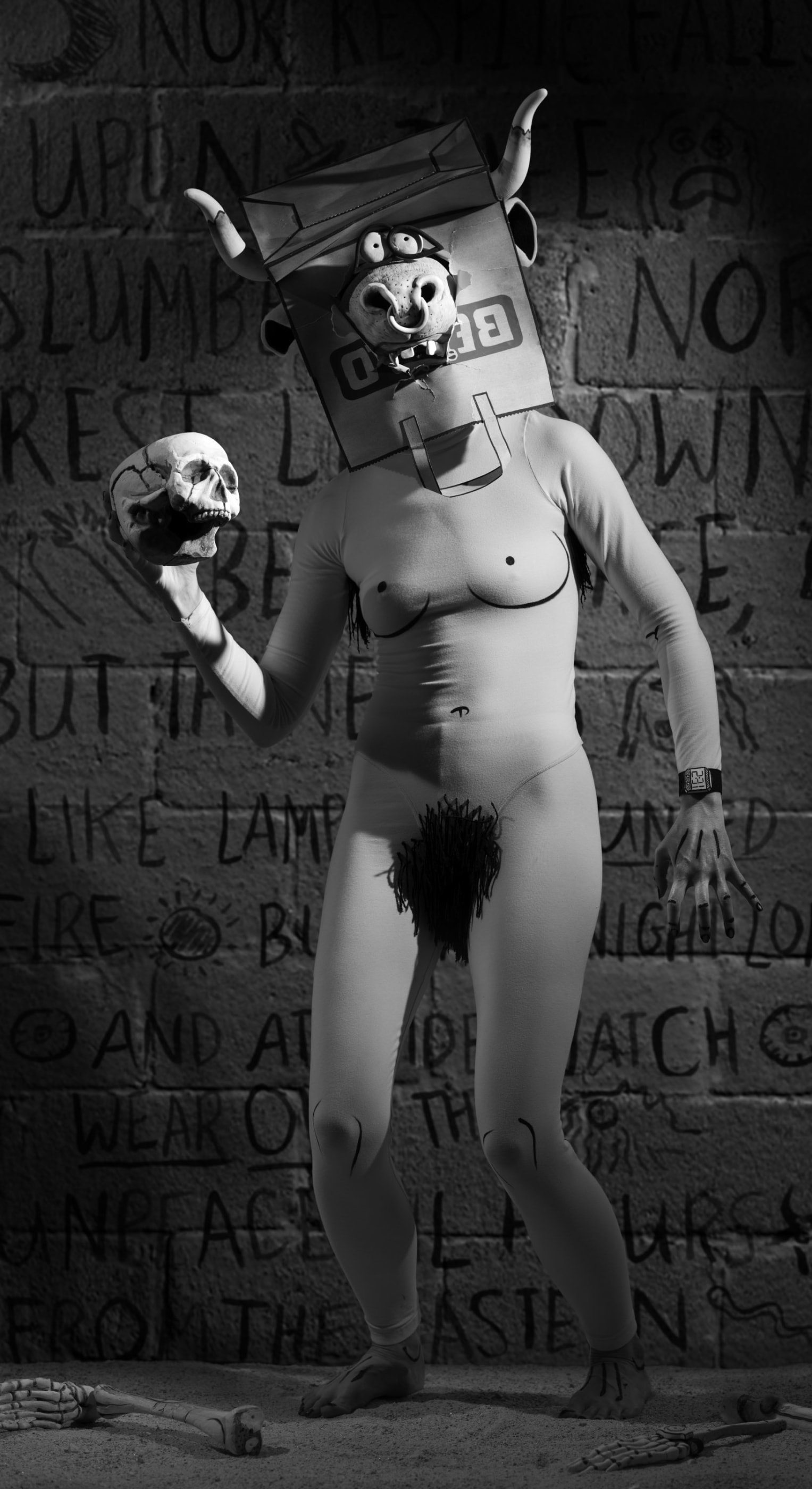Overview
The first thing you’ll notice is the eyes. Whether goggled, bug-like, or comic strip–esque, the eyes are obscured. But behind Mary Reid Kelley’s signature prosthetics, the characters see—and say—very much.
Composed of live action and stop-motion animation, the South Carolina native’s narrative videos present historical or myth-based stories. At the center of each is a main character or narrator played by Reid Kelley, who appears costumed, bewigged, and practically unrecognizable, her face painted white with features defined in black. A trained painter, Reid Kelley creates all of her costumes, props, and sets in black and white, creating a kind of three-dimensional drawing. Everything is drawn and painted, and intended to look so.
Along with a sprinkling of auxiliary characters, many of whom she also plays, Reid Kelley’s narrators bring to life eras of significant historical change, often moments when women’s roles were transformed, in playfully bawdy, pun-laden verse. In Sadie the Saddest Sadist (2009), we hear from a World War I–era woman who goes to work in a munitions factory, meets a sailor, and contracts the clap. In The Syphilis of Sisyphus (2011), a pregnant Parisian prostitute extols the virtue of cosmetics, reports on the French Revolution, and is carted off to an asylum to be treated for hysteria.
Aesthetically, the works draw inspiration from such varied materials as newspaper comic strips and Futurist manifestos, and artists such as Marcel Duchamp and Fernand Léger, while intellectually, sources range from poetry to philosophy to history.
The exhibition includes four videos created between 2008 and the present, with progressively higher production values thanks in part to the contribution of Reid Kelley’s collaborator and husband Patrick Kelley, who digitally assembles elements shot on green screen. Among the works is Reid Kelley’s most recent, Priapus Agonistes, an adaptation of the Greek Minotaur myth that recasts Priapus—a god of fertility and protector of livestock known for his large, enduring erection—as a volleyball player.
Pitting religion against myth, Priapus represents a shift for Reid Kelley, although as in all of her works to date, humankind’s perennial desire to escape the roles assigned by nature and culture remains at the heart of the work. Reid Kelley’s work makes this plight palpable through history, and palatable through comedy

